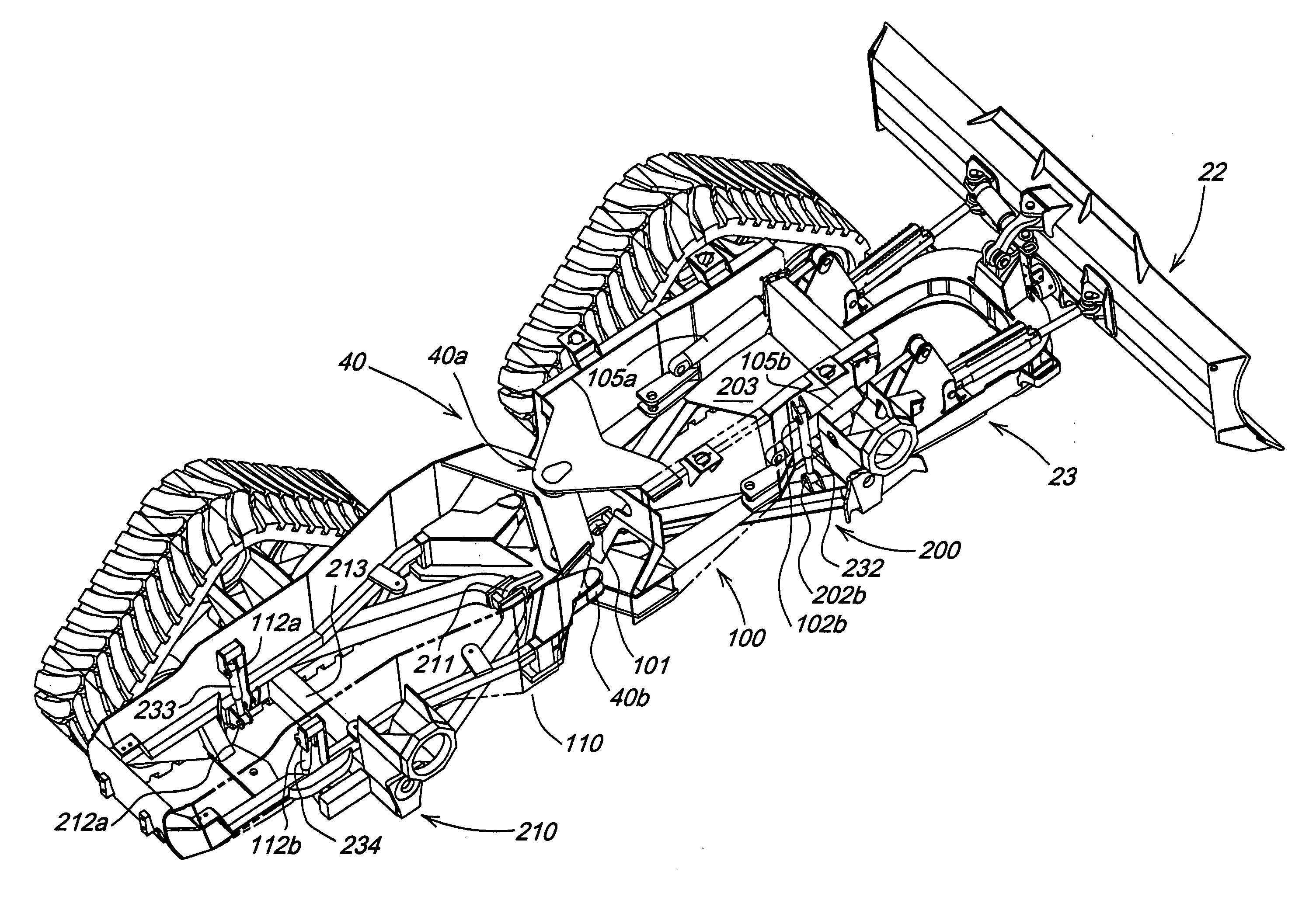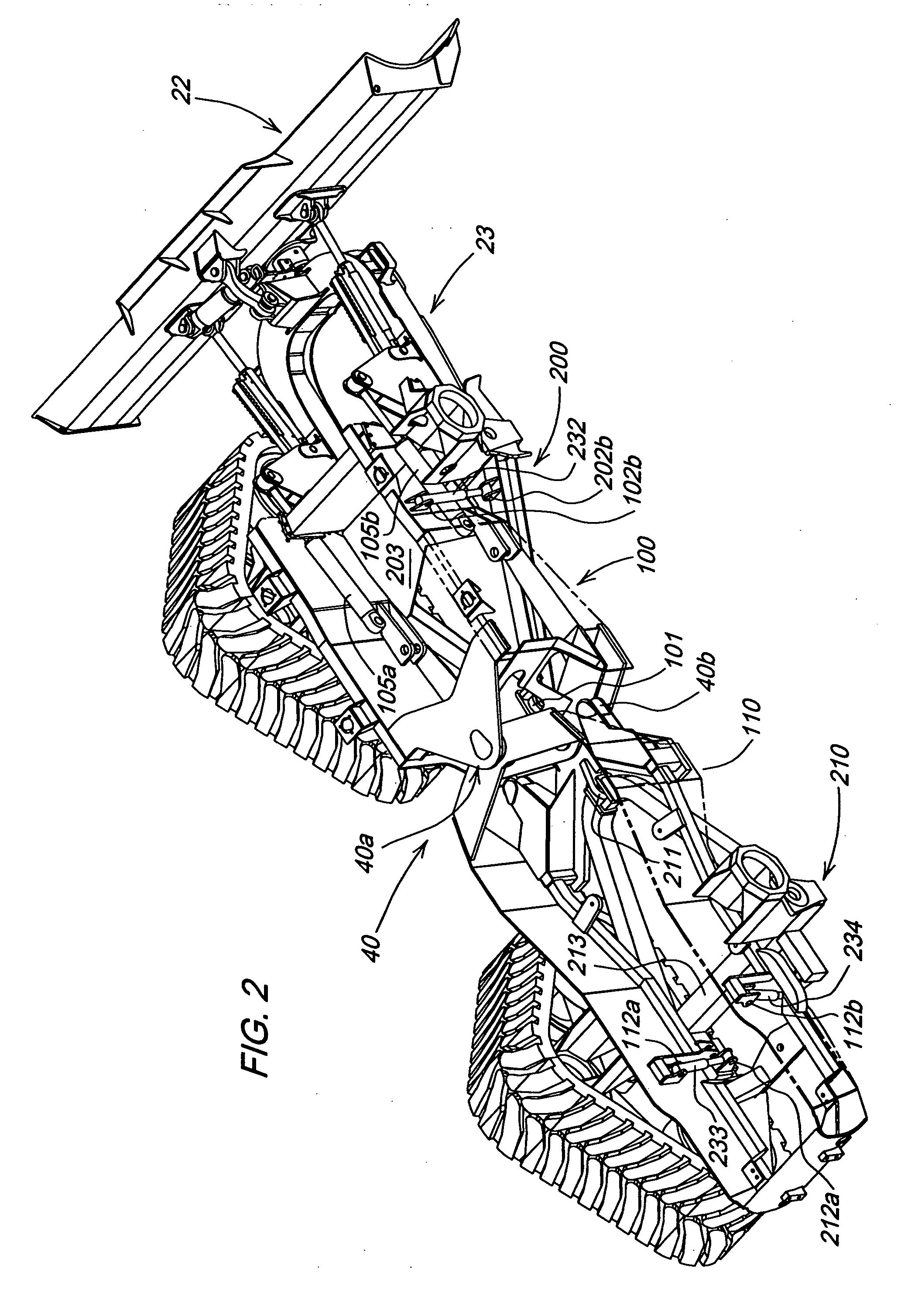Load based suspension motion limiting
a technology of load-based suspension and motion limitation, which is applied in the direction of mechanical machines/dredgers, trailer steering, transportation items, etc., can solve the problems of varying vertical loads on the blade and the suspended chassis of the vehicle, loose suspension, and inability to generate a full blade load
- Summary
- Abstract
- Description
- Claims
- Application Information
AI Technical Summary
Benefits of technology
Problems solved by technology
Method used
Image
Examples
Embodiment Construction
[0020] The exemplary embodiment of the invention described herein is applied to a crawler dozer with four independent track systems. In this configuration, the track systems are mounted such that they can move in a way that they can follow the contour of the ground. Each of the tracks pivots about a drive wheel.
[0021]FIG. 1 illustrates a vehicle in which the invention may be used. The particular vehicle illustrated in FIG. 1 is a four track articulated dozer 10 having a front portion 20 a rear portion 30; an articulation mechanism 40 between the front portion 20 and the rear portion 30; first and second track systems 50, 60; and third and fourth track systems 70, 80. The front portion 20 includes a blade 22 and a blade mounting frame 23 as well as an operator cab 21.
[0022] A first A-frame 200 is pivotally connected to both the first and second track systems 50, 60, i.e., rocker arms 51, 61 at first and second track frame pivots 51a, 61a. This first A-frame 200 is connected to a fr...
PUM
 Login to View More
Login to View More Abstract
Description
Claims
Application Information
 Login to View More
Login to View More - R&D
- Intellectual Property
- Life Sciences
- Materials
- Tech Scout
- Unparalleled Data Quality
- Higher Quality Content
- 60% Fewer Hallucinations
Browse by: Latest US Patents, China's latest patents, Technical Efficacy Thesaurus, Application Domain, Technology Topic, Popular Technical Reports.
© 2025 PatSnap. All rights reserved.Legal|Privacy policy|Modern Slavery Act Transparency Statement|Sitemap|About US| Contact US: help@patsnap.com



